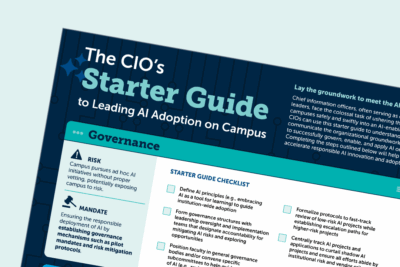Analytics and Business Intelligence Functions in Higher Education
This resource will help institutions structure and communicate business intelligence and analytics functions to improve data-driven decision-making.
In recent years, many institutions have begun to improve and expand their analytics and business intelligence (BI) functions. To help institutions in these efforts, this brief examines the structure and operations of BI and analytics functions. It includes information on balancing centralized and decentralized BI functions, team member roles and responsibilities, and communicating new BI structures and initiatives to institutional stakeholders. Read this brief to improve BI efforts and encourage data-driven decision-making at your institution.
Structure of analytics and BI functions
This section of the report discusses how to combine a centralized business intelligence (BI) team with decentralized content specialists for an ideal analytics and BI structure.To effectively coordinate BI efforts, develop advanced analytics capabilities, and use data to drive institution-wide decision-making, all institutions profiled in this report use a “federated” BI structure. This structure includes a centralized BI team as well as decentralized unit-level BI staff; centralized units hold responsibility for coordinating BI efforts, while decentralized staff maintain responsibility for unit-level BI functions.
Operations of analytics and BI functions
This section of the report discusses how to communicate data insights to different audiences, gather feedback on BI efforts, and address pushback to new BI initiatives. Read this section to learn how to best obtain buy-in for data-driven decision-making at your institution and continuously improve your BI efforts.
More Resources

APS Click-by-Click Walkthroughs

How EAB's Edify Makes Your LMS Data Actionable
